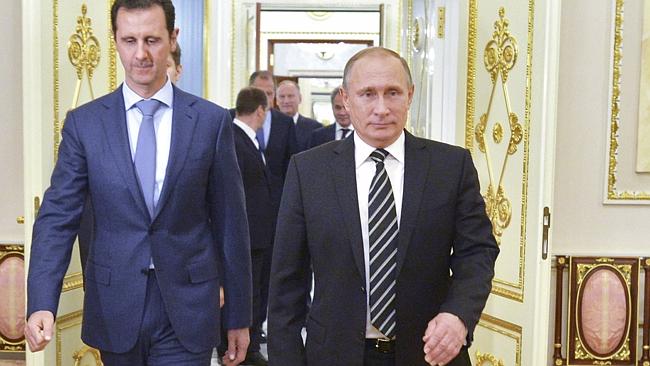By Liam Prendergast
For the first time since the conflict began in 2011, the prospects of achieving stability in Syria, or at the least a de-escalation of violence, are looking more optimistic than what pundits predicted at the start of 2016. In February, a ceasefire between the Assad regime and the Syrian Opposition, orchestrated primarily by both the US and Russia, was reached, allowing crucial aid convoys to reach the beleaguered and besieged civilians trapped by the conflict.
Despite the notable absence of both ISIL and Jabhat al-Nusra (the Al-Qaeda affiliate in Syria) from the terms of the ceasefire, the lull in fighting bodes well for future peace negotiations. Whilst any grand results are not expected, the hope remains by all involved in the talks that a state of relative calm can be maintained, at least long enough to finalize a deal.
Regardless of whether or not any meaningful results arise from the Geneva negotiations, one thing remains clear: that the international powers involved in the Syrian conflict hold far more leverage on the ground than previously thought. The states party to the talks in Geneva have shown the extent to which Syria has become a proxy war between regional and international backers, in which domestic forces have become almost entirely dependent upon foreign intervention to continue the fight. The recent rebound of the Assad regime, in the form of recapturing territory in the predominantly rebel-controlled north and east of the country, has been primarily due to both Russian air and Iranian ground support, from both the Revolutionary Guard and Iran’s Shiite proxy, Hezbollah. On the side of the opposition, the Saudi and Qatari funded ‘Islamic Front’ – a collection of various Islamist rebel groups – has been the mainstay of the opposition forces battling Assad; US airstrikes are keeping ISIL at bay, while also supporting Kurdish ground forces in the North, further preventing ISIL from concentrating forces against the so-called ‘moderate opposition’.
The key to understanding the motivation behind all the foreign intervention in Syria lies in the competition for the rights to the construction of an oil and gas pipeline. More specifically, the foreign interests are vying for control over a pipeline connecting the export states in the Middle East with the ever-growing market of Western and Central Europe. The construction of such a pipeline would essentially act as a ‘petroleum highway’, dramatically lowering the overhead costs of oil and gas exports to European markets by essentially removing the necessity of shipping petroleum to Europe via the Suez Canal.
There are currently two pipelines in competition for development: The Qatar-Turkey pipeline, backed by the US and Gulf states; and the Iran-Syria ‘friendship pipeline’, backed by Russia.
The Qatar-Turkey pipeline aims to connect the enormous South-Pars natural gas fields off the coast of Qatar to Europe, via Saudi Arabia, Jordan, Syria, and out through Turkey. Such a pipeline could effectively establish the hegemony of the Gulf States over the European energy market for the better part of the century. More importantly, it would also effectively remove the current Russian domination of the European market: Russia’s state owned energy company Gazprom accounts for 80% of its exports. This provides a bulk of the export revenue for the Russian economy. Whilst the European Union has somewhat succeeded in diversifying the European markets away from complete dependence on Russia, the fact remains that over 30% of total European demand is directly supplied by Gazprom, including 25% of Germany’s (the largest economy in the Union) total demand. This domination of the European energy market is critical for the health of Russian economy, which (according to the World Bank in 2015) relies on energy export for almost 20% of its total GDP.
The attendance of both the Syrian regime and the opposition at the talks displays, at the very least, some willingness to reach a diplomatic resolution to the conflict.
Thus, Russia views any potential infringement on its export market as unacceptable. Indeed, in 2009 when Qatar approached Syria about developing the pipeline, Assad, under heavy Russian influence, refused. Instead, Assad agreed to the development of the Iran-Iraq-Syria ‘Friendship Pipeline’ in 2011, which called for oil and gas to be transported from Iran out through to Europe via undersea pipelines at the Syrian port of Latakia – the site where Russia also maintains its Mediterranean fleet. The ‘Friendship Pipeline’, should it be successfully implemented, would provide unparalleled opportunity for Iran, Saudi Arabia’s principal rival in the region, and open a lucrative new market for Iranian enormous oil and gas reserves.
Furthermore, the Friendship pipeline gives Moscow more control over the international market than the Qatari alternative. ‘The Friendship Pipeline’ could use its influence over its ally in Assad to prevent Russian decline over its energy export market. The opportunity for the Syrian regime to collect tariff fees from the pipeline running through its territory was furthered following the discovery of an untapped gas reserve. The enormous untapped reserve was discovered in 2010 in the Levant basin off the Syrian coast by the US Geological survey, which provided further motive for the rapid construction of the pipeline. Construction was proposed to begin as early as 2013, assisted by Gulf and US backers with over $3 billion from Qatar alone, but the escalation of the Syrian Civil War prevented any such development.
More specifically, the foreign interests are vying for control over a pipeline connecting the export states in the Middle East with the ever-growing market of Western and Central Europe.
At first glance, the proxy nature of the conflict and the embroilment of foreign interests looks to be an impediment to finding a resolution to end the Civil War. However, I would argue that it is these interests that could provide for cautious optimism in Geneva, should talks resume. The attendance of both the Syrian regime and the opposition at the talks displayed, at the very least, some willingness to reach a diplomatic resolution to the conflict. Furthermore, Russia’s announcement of its withdrawal of its ground forces in Syria indicated that Moscow was serious about acting as an arbiter in Geneva, as opposed to purely negotiating through iron and steel. Indeed, over the matter of oil and gas, Russia and the OPEC states have indicated a willingness to cooperate; the recent tentative agreement between Russia and Saudi Arabia to lower oil production- to almost a 12-year low- in response to low oil prices is gaining traction. Even Iran and its bitter rival, Saudi Arabia, are showing interest.
In addition, the threat that ISIL poses to all states involved in the conflict, particularly since the wave of terror attacks in November, including the attack in Paris, may provide the grounds for cooperation against the common foe and allow for the development of trust between competing parties. This genuine threat of jihadist insurrection across the region, coupled with the ongoing migrant crisis enveloping Europe, has demonstrated to all parties and interests that the war in Syria needs to end. These issues could potentially provide a framework through which a diplomatic settlement in Syria may be reached, as peace becomes a greater objective amongst all parties. This would also free up resources to combat ISIL, which will not be represented at the talks.
However, this cautious optimism for peace remains just that, with the fact prevailing that a diplomatic solution to the Syrian Civil War will require overcoming entrenched political and ideological conflict between rival states in the region, notably Saudi Arabia and Iran. Furthermore, there must be the fostering of a transparent reconciliation of at-odds oil and gas interests between the Gulf States and Russia. The truth is that whatever the result of the Geneva peace talks, without this reconciliation of key interests the war will go on.


